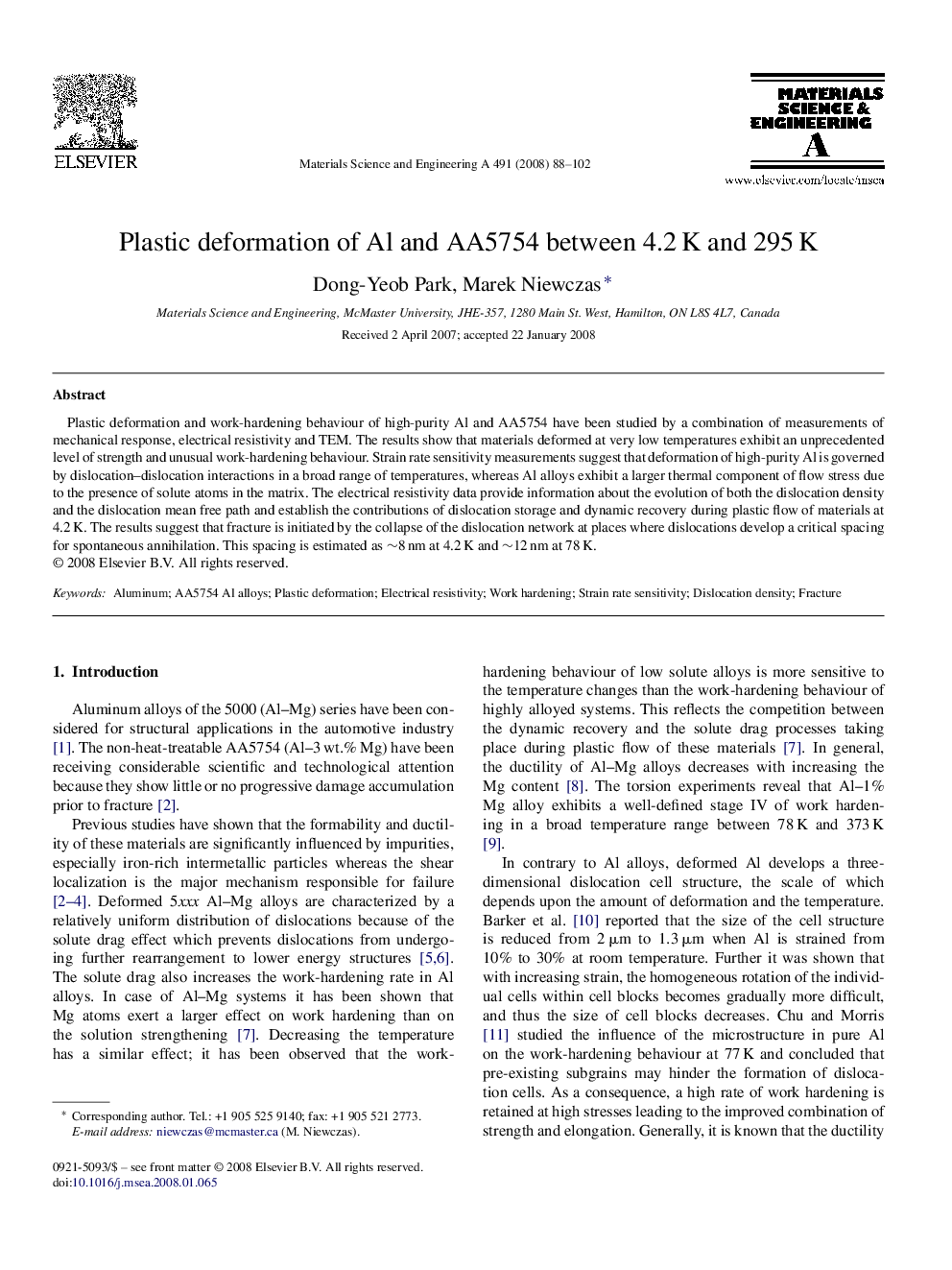| Article ID | Journal | Published Year | Pages | File Type |
|---|---|---|---|---|
| 1582025 | Materials Science and Engineering: A | 2008 | 15 Pages |
Abstract
Plastic deformation and work-hardening behaviour of high-purity Al and AA5754 have been studied by a combination of measurements of mechanical response, electrical resistivity and TEM. The results show that materials deformed at very low temperatures exhibit an unprecedented level of strength and unusual work-hardening behaviour. Strain rate sensitivity measurements suggest that deformation of high-purity Al is governed by dislocation-dislocation interactions in a broad range of temperatures, whereas Al alloys exhibit a larger thermal component of flow stress due to the presence of solute atoms in the matrix. The electrical resistivity data provide information about the evolution of both the dislocation density and the dislocation mean free path and establish the contributions of dislocation storage and dynamic recovery during plastic flow of materials at 4.2Â K. The results suggest that fracture is initiated by the collapse of the dislocation network at places where dislocations develop a critical spacing for spontaneous annihilation. This spacing is estimated as â¼8Â nm at 4.2Â K and â¼12Â nm at 78Â K.
Keywords
Related Topics
Physical Sciences and Engineering
Materials Science
Materials Science (General)
Authors
Dong-Yeob Park, Marek Niewczas,
